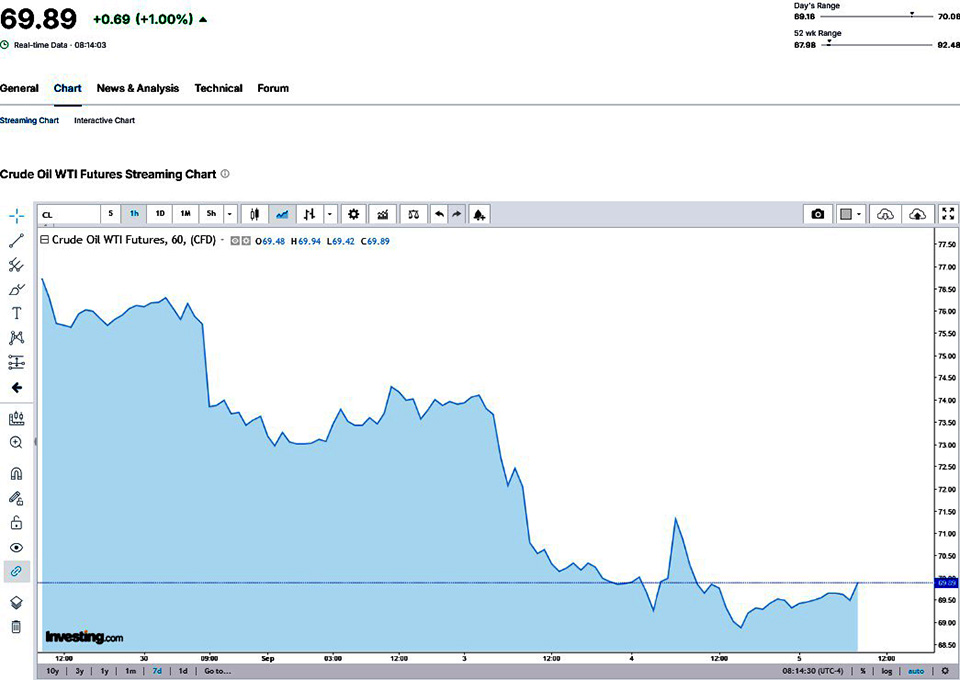
Oil prices fell sharply, with West Texas Intermediate (WTI) crude oil dropping over 3-4% and falling below $71 per barrel as of September 4 and hits around $69 on September 5. The decline within the past week comes amid ongoing concerns about China’s weakening economy and news that the Organization of the Petroleum Exporting Countries (OPEC) and its allies, known as OPEC+, plan to increase oil production in October.
The October delivery WTI crude oil price was down by $2.77, or 3.77%, settling at $70.78 per barrel.
Key Factors Driving the Decline:
- Weakening Chinese Economy: China’s manufacturing sector hit a six-month low in August, contributing to global oil market concerns. China is the world’s second-largest importer of crude oil, and a slowdown in its economic activity directly impacts global oil demand.
- OPEC+ Production Increase: According to Reuters, six sources from the OPEC group revealed that OPEC+ plans to proceed with increasing oil production in October. Eight member countries from OPEC+ are set to raise production by a combined 180,000 barrels per day starting next month.
- Market Dynamics: The decision to increase production comes after Libya reduced its oil output due to internal political issues. Additionally, the Federal Reserve’s potential interest rate cut in September could stimulate economic growth and boost oil demand.
- Current Production Cuts: OPEC+ currently reduces production by a total of 5.86 million barrels per day, including 3.66 million barrels per day from member cuts and 2.2 million barrels per day from voluntary reductions by eight OPEC+ countries. The 3.66 million barrels per day reduction is set to end by late 2025, while the voluntary cuts will gradually cease from October 2024 to September 2025, indicating a potential increase in production starting in October 2024.
These developments signal a complex interplay between global economic factors and oil supply adjustments, affecting market dynamics and oil pricing trends.








